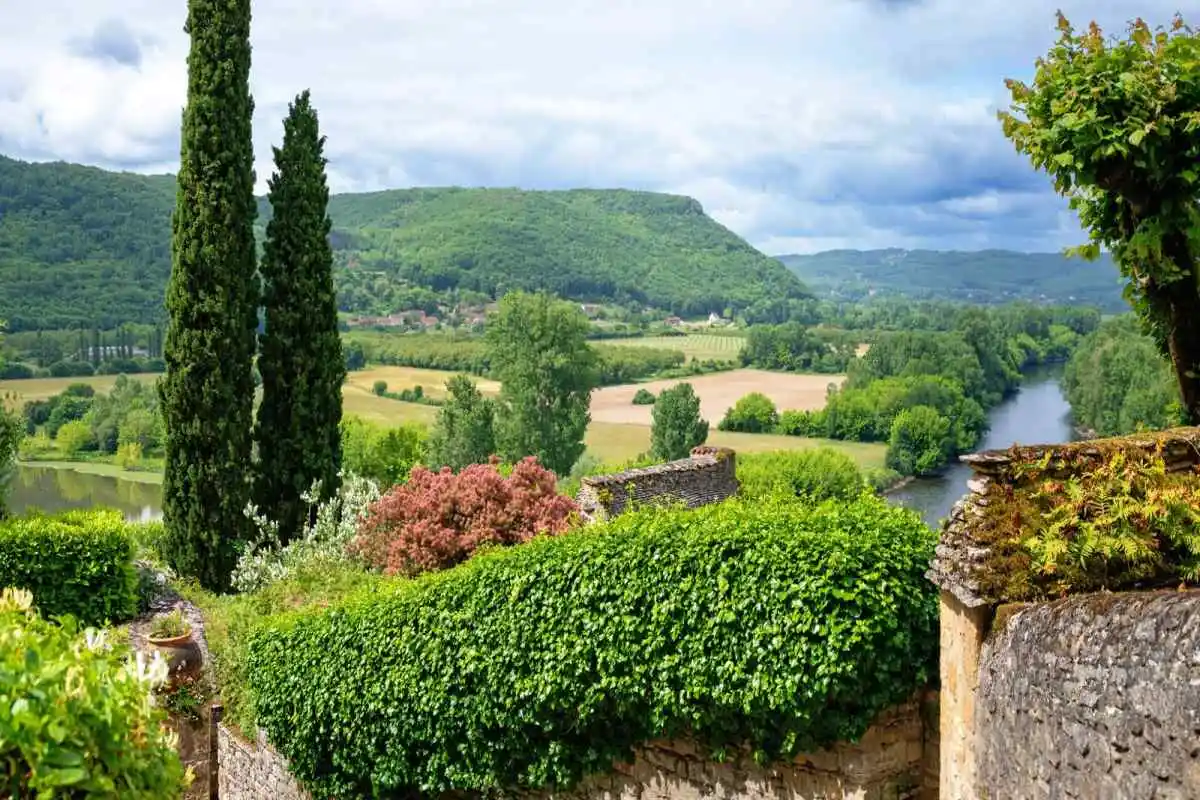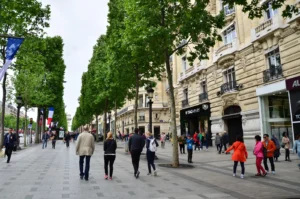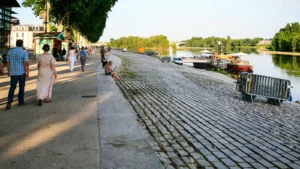Ever heard of Dordogne and thought, “That sounds lovely—but where is Dordogne in France? exactly?” You’re not alone. Dordogne is one of France’s most charming regions, packed with fairytale villages, ancient caves, sun-dappled vineyards, and some of the best food markets in the country. However, before planning your getaway, it’s helpful to know where you’re headed.
Located in southwest France, Dordogne is part of the Nouvelle-Aquitaine region. It sits between the bustling wine capital of Bordeaux and the scenic hills of the Massif Central. This spot offers a perfect blend of rural escape and cultural depth—ideal for slow travel, outdoor adventures, or food and history enthusiasts.
In this guide, we’ll show you exactly where Dordogne is on the map, how to get there, what surrounds it, and why its location plays such a significant role in shaping its character. Whether you’re planning your first trip or just curious about this stunning part of France, you’ll come away with a clear picture of what makes Dordogne so special.
Geographically Speaking — Dordogne’s Spot on the Map
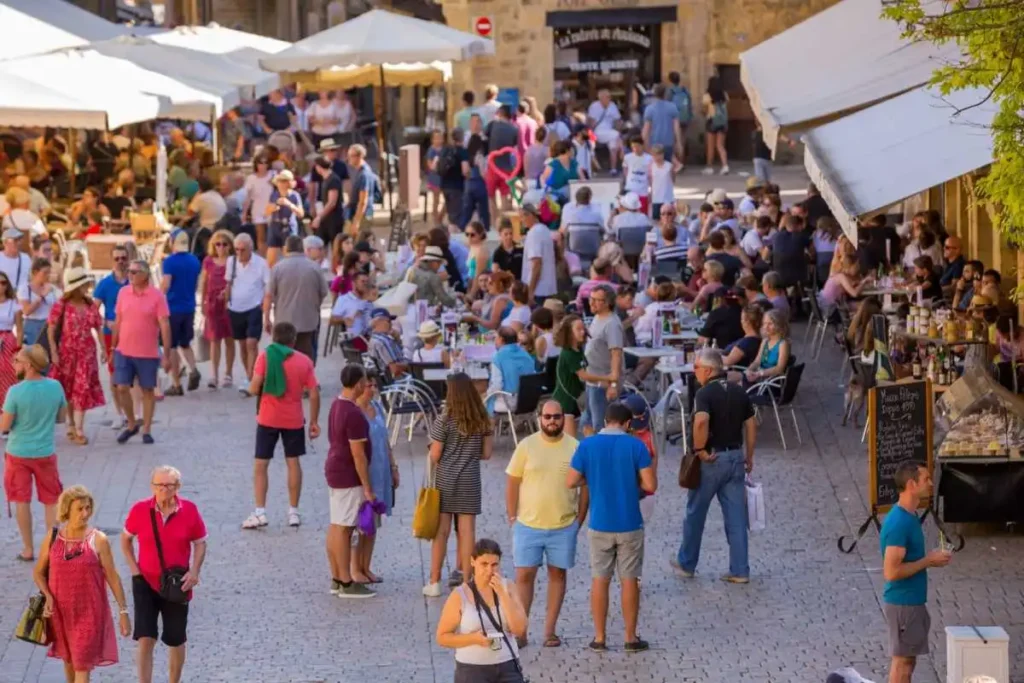
Dordogne is a department in the southwest of France, sitting comfortably within the larger Nouvelle-Aquitaine region. If you’re looking at a map, you’ll find it nestled between the rolling vineyards of Gironde (home to Bordeaux) to the west, and the wooded hills of Corrèze and Lot to the east. It’s situated about halfway between the Atlantic coast and the central highlands of France, resulting in a landscape that’s both lush and varied.
Most of the Dordogne lies within the Aquitaine Basin, known for its fertile valleys and gently undulating terrain. However, in the northeast, it edges into the Massif Central, bringing a touch of higher elevation and rugged charm. That mix of terrain is part of what makes Dordogne so appealing—it’s a patchwork of river valleys, dense forests, limestone cliffs, and rolling farmland.
With an area of around 9,060 km², Dordogne is the third-largest department in France. Yet it’s far from crowded. While official figures listed about 415,000 residents in 2010, much of the region still feels wonderfully rural and open.
Major towns include Périgueux (the capital), Bergerac, Sarlat-la-Canéda, Nontron, and Ribérac—each offering its own unique vibe. From Roman ruins to Renaissance facades and prehistoric cave sites, Dordogne’s geography tells a story at every turn.
Map of Dordogne (Visual Breakdown)
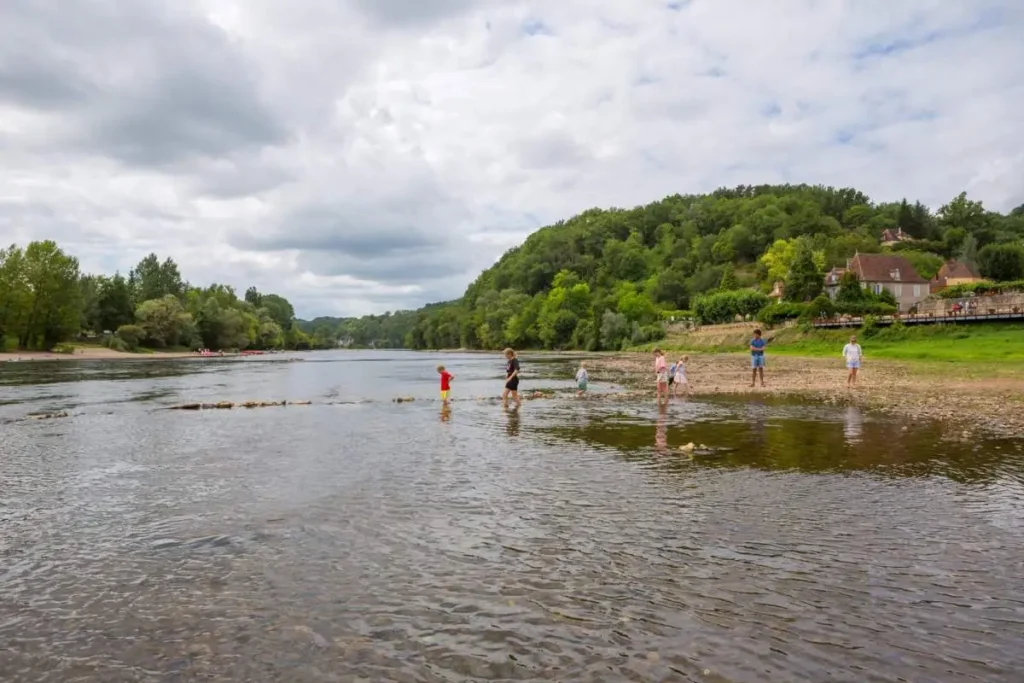
Now that you know roughly where Dordogne sits in France, let’s take a closer look at it on the map.
Dordogne is divided into four distinct sub-regions, known as the “Four Périgords”—each with its own landscape, history, and personality. This breakdown is super helpful when planning where to stay or what to see. Here’s a quick visual guide:
Rivers That Define the Region
Three major rivers help define Dordogne’s layout and lifestyle:
- The Dordogne River: Originating in the Massif Central, it flows west through the department, carving out valleys and nurturing vineyards, villages, and diverse wildlife. It’s ideal for canoeing, kayaking, and riverside picnics.
- The Vézère River: A tributary of the Dordogne, this one’s famous for its prehistoric cave sites, especially around Les Eyzies and Montignac. This valley is also home to the legendary Lascaux caves.
- The Isle River: Flowing through Périgueux and into the Dordogne, the Isle is quieter but still central to daily life in the region.
These rivers don’t just add to the views—they’ve shaped local history, trade, and even cuisine.
The Four Périgords (Sub‑regions) & Major Towns
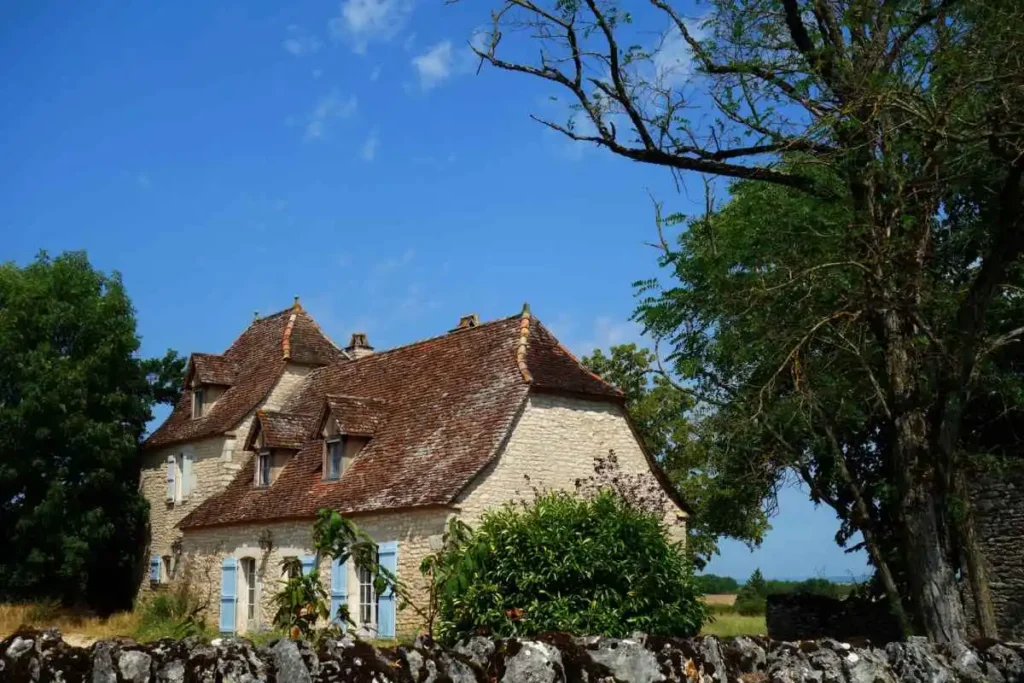
One of the most unique things about Dordogne is that it’s not just one homogenous region—it’s made up of four distinct areas, each known as a Périgord. These aren’t official administrative zones, but long-standing regional nicknames that locals and travelers alike still use today. They’re color-coded based on the landscape, culture, and even soil types—and each one offers something a little different.
Périgord Vert (Green Périgord)
Located in the north, Périgord Vert is true to its name—lush, green, and full of natural beauty. It’s less touristy than the southern parts of Dordogne, making it a perfect retreat for those craving peace, fresh air, and charming countryside vibes.
- Landscape: Rolling hills, forests, and rivers like the Dronne and Bandiat.
- Top Towns: Nontron (famous for knife-making), Brantôme (nicknamed the “Venice of Périgord”).
- Vibe: Relaxed, rustic, great for slow travel, nature lovers, and outdoor activities.
Périgord Blanc (White Périgord)
In the center of Dordogne, Périgord Blanc gets its name from the pale limestone rock that dominates the landscape. This is where you’ll find Périgueux, the department’s capital, known for its Roman ruins and bustling markets.
- Landscape: Limestone plateaus, open countryside, and wide valleys.
- Top Towns: Périgueux, Vergt, Neuvic.
- Vibe: A mix of historical charm and modern comforts; great for foodies, history buffs, and market-goers.
Périgord Noir (Black Périgord)
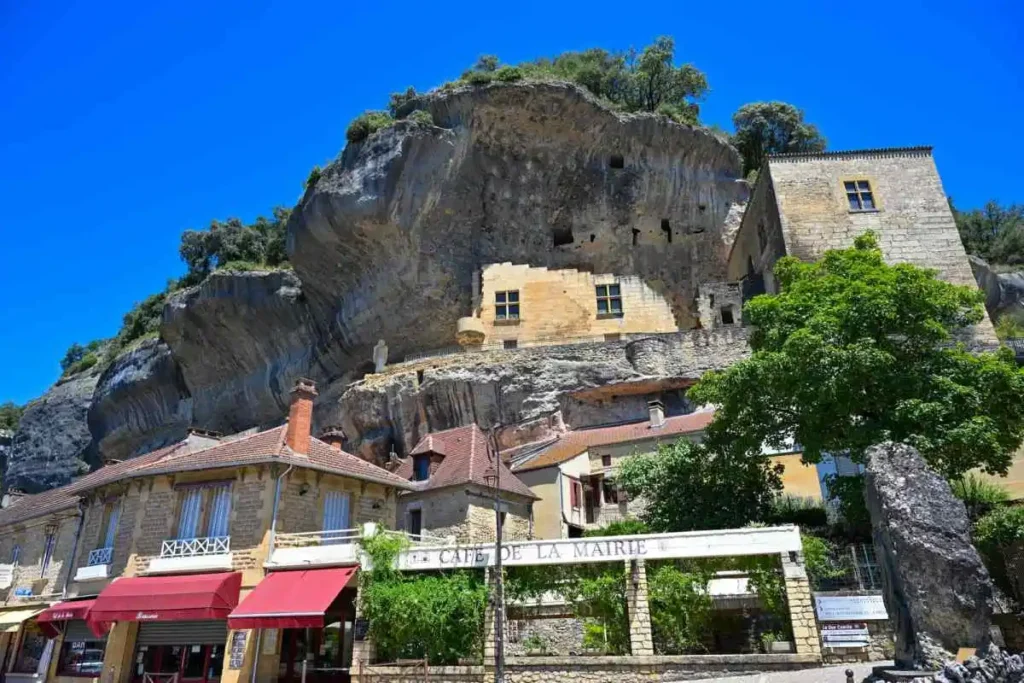
Probably the most famous and visited part of the Dordogne, Périgord Noir is located in the southeast and is packed with iconic sites. It’s called “black” not because of anything gloomy, but because of the dense oak forests that once gave the area a dark appearance.
- Landscape: Deep valleys, cliffs, rivers, caves, and thick woods.
- Top Towns: Sarlat-la-Canéda, Domme, Les Eyzies, Montignac (home to Lascaux caves).
- Vibe: Historic, dramatic, and cultural. Castles, caves, and postcard villages around every bend.
Périgord Pourpre (Purple Périgord)
To the southwest, Périgord Pourpre is all about vineyards and wine culture. The name refers to the rich purple hue of the local grapes, and it’s here that you’ll find some of the best wine experiences in the region.
- Landscape: Vine-covered hills, river plains, and patchwork farmland.
- Top Towns: Bergerac, Monbazillac, Eymet, Issigeac.
- Vibe: Wine-forward, sunny, and friendly. Great for wine tasting, food markets, and medieval fairs.
Each Périgord has its own rhythm and personality, which is why many visitors choose to base themselves in one and day-trip to the others. Whether you’re into nature, food, wine, history, or just scenic drives, knowing the “color zones” helps you tailor your Dordogne adventure.
The Climate: Mild, Varied, and Pleasant
Dordogne enjoys a temperate oceanic climate, heavily influenced by its position between the Atlantic and the inland plateaus. Here’s what that looks like through the seasons:
- Spring: Mild and green, with flowers in bloom. Great for hikes and market strolls.
- Summer: Warm to hot (25–35°C), with long sunny days. Occasional thunderstorms bring refreshing cool-downs. It’s peak season for outdoor activities.
- Autumn: Cooler, crisp, and golden—perfect for food festivals, wine harvests, and scenic drives.
- Winter: Generally mild, though frost and fog are common. Cold snaps do happen (temperatures have dropped as low as -20°C in rare years), but snow is rare.
The variety of microclimates across the region—thanks to elevation changes, forests, and water bodies—means one part of Dordogne can feel very different from another, even on the same day.
Helpful Map Tips & Visual Landmarks
- Include major road/highway routes that link the towns, such as roads from Bordeaux to Bergerac to Périgueux, etc.
- Rivers are natural “spines” for geography: following the Dordogne River, the Vézère Valley, and the Isle give good orientation.
- Terrain changes: higher elevation toward the northeast (Massif Central fringe) vs flatter plains and river valleys in the south/southwest.
- Use marked lookout points/villages perched on cliffs (e.g., Beynac et Cazenac, La Roque‑Gageac) — they’re excellent visual references.
What’s Around Dordogne? Neighboring Regions & Why They Matter
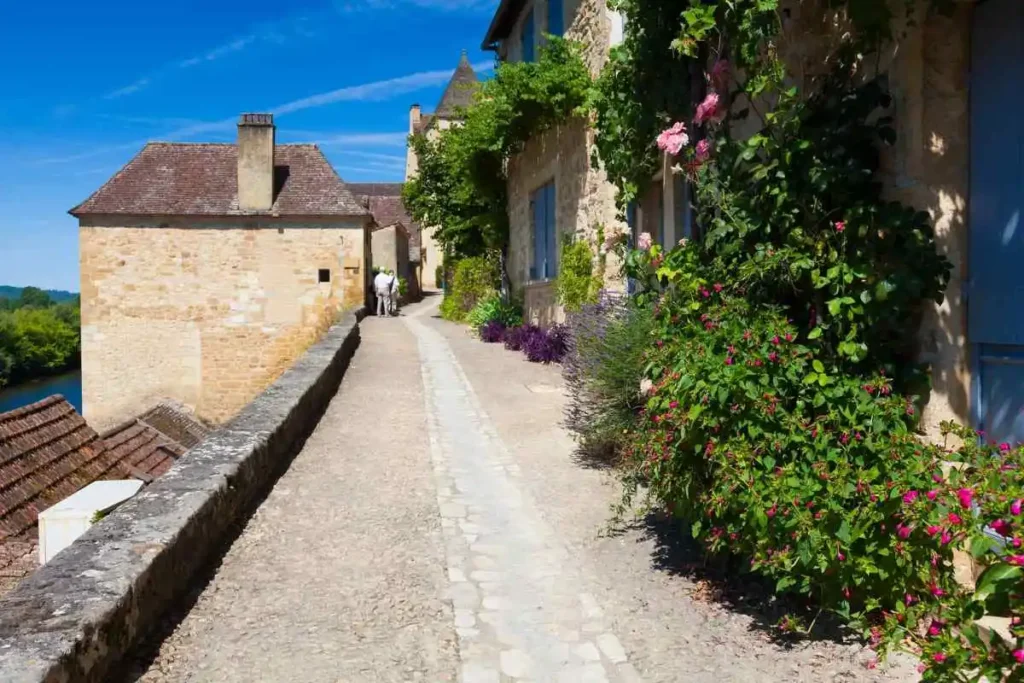
Dordogne is at the heart of southwest France—but it’s far from isolated. In fact, it borders seven departments, each offering its own mix of landscapes, history, cuisine, and culture. This proximity adds huge value to any trip, whether you’re planning scenic drives, day trips, or a longer regional loop.
Let’s explore what surrounds Dordogne and why it’s worth paying attention to.
North: Haute-Vienne — Forests, Lakes & Porcelain
Bordering Dordogne to the north, Haute-Vienne is part of the old Limousin region. It’s greener, calmer, and less crowded—a haven for hikers and nature lovers. You’ll find lakes like Lac de Vassivière, peaceful trails, and forests that feel almost untouched.
It’s also home to Limoges, known worldwide for its fine porcelain, museums, and medieval streets. If you want a break from Dordogne’s castles and caves, Haute-Vienne offers a quieter, more reflective pace with a slightly different cultural feel.
Northeast: Corrèze — Hills, Rivers & Hidden Villages
To the northeast lies Corrèze, where the landscape gets hillier and more rugged. It’s a land of valleys, winding rivers, and wooded slopes. The Dordogne River flows through here too, but in its wilder, less-tamed upper stretches.
Corrèze is perfect for outdoor lovers—kayaking, fishing, hiking, and scenic drives through quiet, stone-built villages like Turenne and Collonges-la-Rouge. It’s a less touristy but incredibly beautiful contrast to the more polished parts of Dordogne.
East: Lot — Dramatic Scenery & Cliffside Towns
Directly east of Dordogne, Lot shares many features—limestone cliffs, prehistoric caves, and medieval towns—but in an even more dramatic fashion. This region is known for Rocamadour, a stunning village built into a cliff, and Saint-Cirq-Lapopie, often ranked among the most beautiful in France.
The Lot River valley is also a joy to explore by car or bike. The Lot’s raw beauty and quieter tourist scene make it a great escape if Dordogne feels a bit busy during peak season.
South: Lot-et-Garonne — Farm Life & Bastide Charm
To the south, Lot-et-Garonne is like Dordogne’s laid-back cousin. It’s more agricultural, with vast orchards, fields of sunflowers, and a patchwork of plum trees and vineyards. The area is famous for Agen prunes, and its local markets are bursting with seasonal produce.
You’ll also find some of the finest bastide towns here—Monflanquin, Villeréal, and Castillonnès—each built on a grid layout around central squares. It’s a dreamy area for slow drives and authentic French village life, with far fewer tourists than central Dordogne.
Southwest: Gironde — Bordeaux, Vineyards & City Life
Head southwest and you’ll enter Gironde, home to the vibrant city of Bordeaux and some of the world’s most celebrated vineyards. From Dordogne, you can easily take a wine-tasting detour to places like Saint-Émilion or Pauillac.
Gironde is where the countryside meets cosmopolitan. The Garonne River runs through it, and if you’re up for a more extended trip, the Atlantic coast—home to Arcachon Bay and the Dune du Pilat—is just a couple of hours away.
Northwest: Charente — Cognac, Rolling Hills & Roman Roots
Bordering Dordogne to the northwest, Charente is a quiet, picturesque region best known for its Cognac production. The town of Cognac itself is surrounded by rolling vineyards and distilleries offering tastings and tours.
The area also has deep Roman roots, visible in towns like Angoulême with its ramparts and beautiful cathedral. It’s a great stop for history buffs and those interested in French spirits and slow-paced village life.
Far Northwest: Charente-Maritime — A Gateway to the Coast
Although only lightly connected to Dordogne, Charente-Maritime offers access to the Atlantic Ocean, beaches, and maritime culture. You’ll find oyster farms, fishing villages, and the charming port town of La Rochelle. This is the direction to head if you want to end your Dordogne journey with some sea breeze and seafood.
Why Dordogne’s Borders Matter
- Perfect for Road Trips: You can explore vineyards, cliffs, lakes, and coastlines—all within a few hours of Dordogne.
- Adds Cultural Contrast: From prehistoric cave art to porcelain museums and Cognac cellars, each region adds something new.
- Travel-Friendly: Most of these areas are connected by scenic country roads or regional trains, making it easy to expand your adventure.
Looking for a place to stay that puts you close to all these regions while offering a taste of historic luxury? Check out Château de Lasfonds in the Périgord Vert. Nestled in the northern countryside of Dordogne, this beautifully restored estate makes the perfect base for exploring both the Dordogne and its charming neighbors—whether you’re heading to the forests of Corrèze, the vineyards of Gironde, or the lakes of Haute-Vienne.
How to Get to Dordogne — Planes, Trains & Scenic Drives
While Dordogne feels blissfully tucked away, getting there is easier than you might think. Whether you’re coming from within France or flying in from abroad, there are several convenient ways to reach this picturesque region.
By Air: The Closest Airports
If you’re flying in, you’ve got a few solid options depending on where in Dordogne you’re headed:
- Bergerac Dordogne Périgord Airport (EGC): Located in the southwest, this is the closest airport to Bergerac and the Périgord Pourpre. It offers direct flights from the UK (London, Manchester, Bristol), Belgium, and the Netherlands during the high season.
- Brive–Vallée de la Dordogne Airport (BVE): Ideal if you’re heading to the Périgord Noir area near Sarlat or the Vézère Valley. Flights are more limited but include seasonal routes from Paris and London.
- Bordeaux–Mérignac Airport (BOD): A major international hub just under 2 hours from Bergerac by car. Great if you’re combining Dordogne with a Bordeaux wine tour.
- Toulouse–Blagnac Airport (TLS): A bit farther (approx. 2.5–3 hours by car), but worth considering if you’re exploring southwest France more broadly.
By Train: Scenic & Stress-Free
Dordogne isn’t served by high-speed TGV trains directly, but you can get close with a connection:
- From Paris: Take a TGV to Bordeaux, Libourne, or Limoges, then switch to a regional TER train.
- Direct regional trains run to Périgueux, Bergerac, Sarlat-la-Canéda, and Brive-la-Gaillarde.
- The train journey from Paris to Périgueux takes about 4.5 to 5.5 hours depending on transfers.
Trains are comfortable and scenic, especially if you’re heading into the forested north or river valleys in the east.
By Car: The Best Way to Explore
Renting a car is, hands down, the best way to experience the Dordogne. Many villages and scenic spots aren’t reachable by train or bus, and driving lets you stop at markets, châteaux, and river lookouts along the way.
- From Bordeaux: ~1.5–2 hours to Bergerac or Périgueux.
- From Toulouse: ~2.5–3 hours to Sarlat or the southern parts of Dordogne.
- From Paris: ~5–6 hours via A20 or A89 motorways.
Tip: Be ready for narrow village roads and limited parking in old towns, especially in peak season.
Thinking of Staying Somewhere Meaningful: Château de Lasfonds
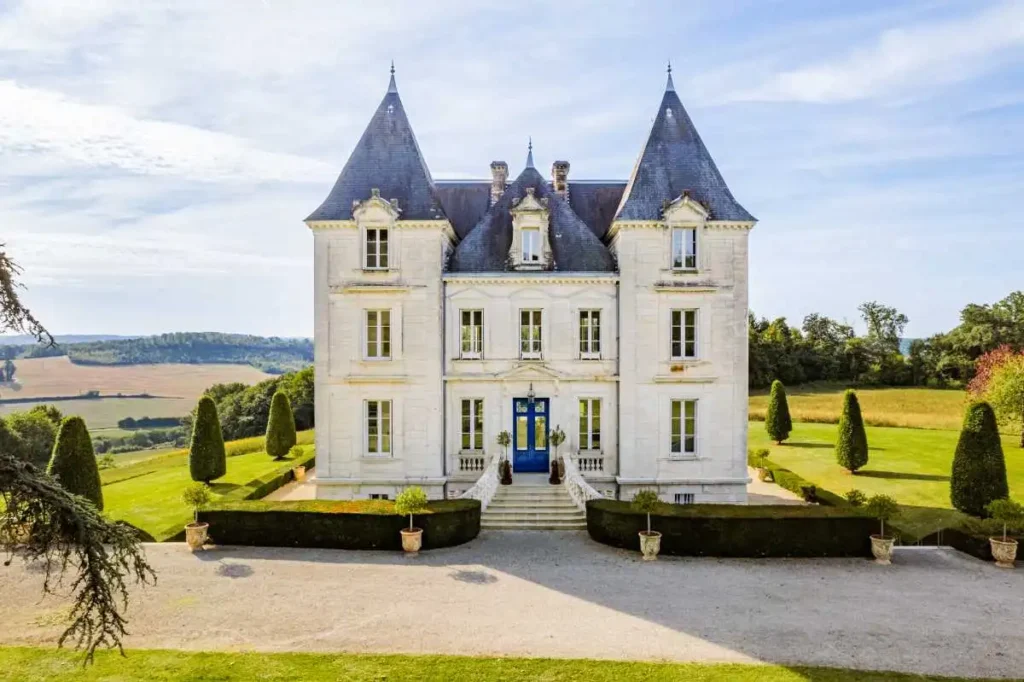
If your travels through Dordogne include more than just ticking off landmarks — if you want a place to slow down, breathe, and soak up French countryside authenticity — then Château de Lasfonds could be something special to consider.
Nestled in La Rochebeaucourt‑et‑Argentine, right on the edge of Périgord Vert and Charente, this estate sits on 6.5 hectares of gardens and parkland. It’s a 19th-century château (built between 1849 and 1893) with careful restoration, blending Neo‑Gothic and Neo‑Renaissance touches with modern comforts.
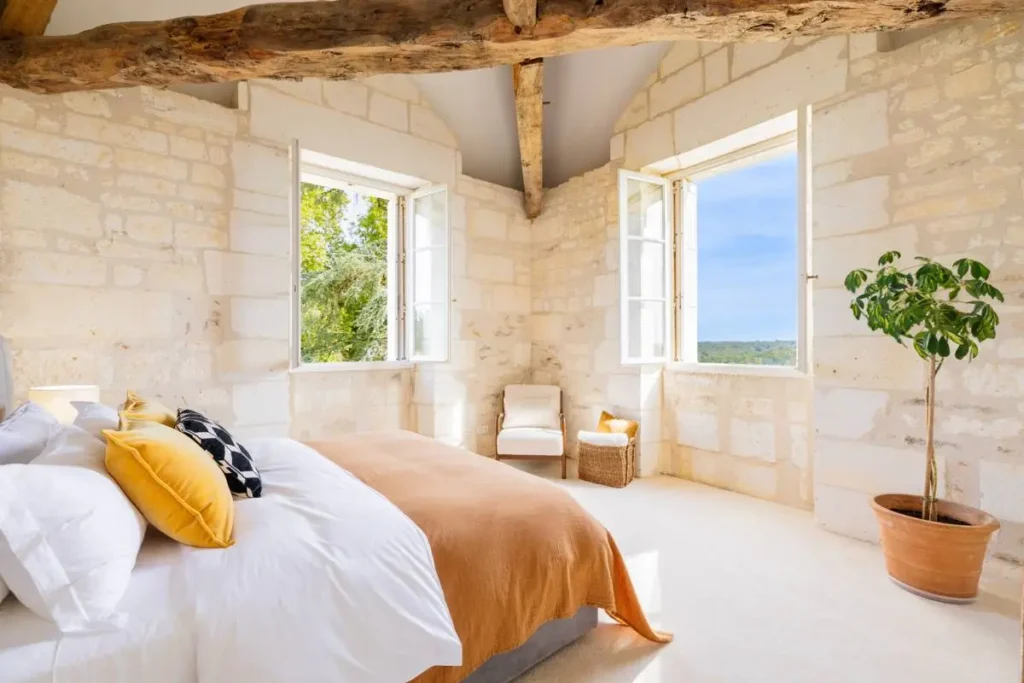
Here are some things that people often mention/enjoy:
- Four roomy, air‑conditioned bedrooms in the main château, plus outbuildings/guest houses that add flexibility (so family groups or friends with some privacy work nicely).
- Views: being on a hill, you get expansive landscapes, peaceful mornings, and a sense of being surrounded by nature.
- Nice amenities: garden, shaded terraces, heated pool, lounges, modern kitchens, games room, etc.
What makes staying here beautiful is that it feels like stepping into a slower pace—not just another place to sleep, but somewhere that adds to your overall experience of the region.
So if you’re planning part of your trip for relaxation, meaningful time with loved ones, or just enjoying the landscape and light rather than rushing from place to place, Château de Lasfonds is worth having on your radar.
FAQs about Where is Dordogne in France
The closest major city to Dordogne is Bordeaux, located about 1.5 to 2 hours away by car. It’s a popular entry point for travelers, with an international airport and great road and rail connections into the region.
Dordogne is famous for its medieval towns, prehistoric cave art (like Lascaux), stunning castles, and rich gastronomy. It’s also known for its scenic rivers, rolling countryside, and a slower pace of life that captures the heart of rural France.
Sarlat-la-Canéda, the Lascaux Caves, Beynac Castle, and the Dordogne River valley are must-sees. These places blend natural beauty, deep history, and that magical French village charm the region is known for.
The nearest airports are Bergerac, Brive–Vallée de la Dordogne, and Bordeaux Mérignac. Bergerac and Brive serve mostly regional and UK flights, while Bordeaux offers more international options and better connectivity.
While beauty is subjective, La Roque-Gageac often tops the list. Built into a cliff along the Dordogne River, it offers stunning views, traditional stone houses, and a serene riverside vibe that feels timeless.
Plan for at least 4 to 6 days to truly enjoy Dordogne’s highlights—castles, markets, villages, caves, and countryside. A full week lets you slow down, explore more deeply, and take in the scenery without rushing.
The best time to visit is May to October, when the weather is warm and the landscapes are lush. July and August are busiest. For fewer crowds and great food experiences, late spring or early autumn is ideal.
Dordogne doesn’t have a coastline, but there are plenty of river beaches where you can swim, sunbathe, or picnic—especially along the Dordogne and Vézère rivers. Many are family-friendly and set in beautiful natural surroundings.
Dordogne has a mild, temperate climate, so rain is fairly well-balanced year-round. Spring and autumn see more showers, but they’re usually short. Summers are mostly sunny, though brief thunderstorms are common in the evenings.
Dordogne is known for foie gras, duck confit, truffles, walnuts, and Périgord strawberries. The region also produces excellent wines (like Monbazillac) and offers one of the most respected food cultures in rural France.
In tourist areas like Sarlat, Bergerac, and major attractions, English is commonly spoken. In smaller villages or rural spots, French is the norm, but locals are usually friendly and patient with visitors making an effort.
That depends on your travel style. Sarlat-la-Canéda is great for first-timers, Bergerac for wine lovers, and Périgueux for history buffs. For countryside escapes, places like Brantôme or Domme offer peace, views, and character.
